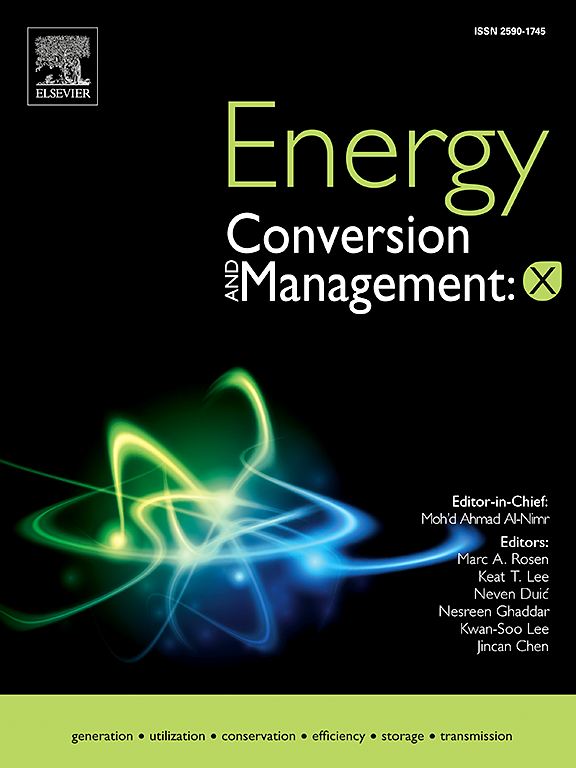Renewable energies in Morocco: A comprehensive review and analysis of current status, policy framework, and prospective potential
IF 7.1
Q1 ENERGY & FUELS
引用次数: 0
Abstract
The power sector in Morocco has undergone significant expansion over the past two decades, characterized by rising electricity consumption, persistent reliance on energy imports, and a generation mix dominated by fossil fuels. In 2022, Morocco produced nearly 43 TWh of electricity, but inefficiencies in storage and distribution limited end-use availability to 38 TWh. Fossil fuels accounted for 83 % of electricity generation, contributing 48 % of the country’s energy-related greenhouse gas emissions. To align with global climate commitments, Morocco has set ambitious decarbonization goals, targeting a 52 % renewable energy share in the electricity mix by 2030 and 70 % by 2050. This review systematically evaluates the renewable energy sector in Morocco, employing the PRISMA methodology to analyze 1,328 references sourced from Scopus, Web of Science, and Google Scholar. The study provides actionable insights into three key areas: (1) the current situation of renewable energy deployment, (2) the policy framework governing renewable energy, and (3) the prospective potential for scaling up renewables in Morocco. The novelty of this research is further underscored by its integration of technical, economic, and policy perspectives into a cohesive framework. It is the first to present critical, non-publicly available data on Morocco’s renewable energy projects gathered through on-site visits and stakeholder interviews. Additionally, this review consolidates and translates fragmented legislative documents—primarily available in Arabic—into a comprehensive English-language reference. Key findings reveal that Morocco’s current renewable energy projects include solar (1.6 GW, 4.14 TWh annually), wind (1.28 GW, 4.29 TWh annually), and hydropower (1.1 GW, 1.7 TWh annually). Targeted efficiency improvements by 2050 include solar (28 %), wind (55 %), and hydropower (90–94 %), with cost reductions to $37/MWh, $41/MWh, $26/MWh, respectively. Integrated energy sectors contribute 41 Mt-CO2e, with renewables advancing solar irrigation (125 MW), industrial power (480 MW), and transport (91 MW). The regulatory framework, comprising Laws 57–09, 37–16, 13–09, and 48–15, has facilitated the development of renewables but requires reform to enhance institutional effectiveness and attract private investments of $1–$2 billion. Detailed recommendations include modernizing grid infrastructure, implementing advanced planning and management strategies, and fostering research and development to reduce energy losses, minimize renewable energy costs, and enhance grid stability. Strengthening ANRE’s authority, simplifying grid access procedures, incentivizing local manufacturing, promoting decentralized energy systems, and enhancing public–private partnerships are essential for addressing the “renewable energy curse,” reducing reliance on fossil fuel imports, and achieving the decarbonization targets in Morocco. By integrating technical, economic, and policy dimensions, this research offers a holistic framework for understanding and advancing the renewable energy transition in Morocco, providing valuable insights for policymakers, researchers, and industry stakeholders.

求助全文
约1分钟内获得全文
求助全文
来源期刊

Energy Conversion and Management-X
Multiple-
CiteScore
8.80
自引率
3.20%
发文量
180
审稿时长
58 days
期刊介绍:
Energy Conversion and Management: X is the open access extension of the reputable journal Energy Conversion and Management, serving as a platform for interdisciplinary research on a wide array of critical energy subjects. The journal is dedicated to publishing original contributions and in-depth technical review articles that present groundbreaking research on topics spanning energy generation, utilization, conversion, storage, transmission, conservation, management, and sustainability.
The scope of Energy Conversion and Management: X encompasses various forms of energy, including mechanical, thermal, nuclear, chemical, electromagnetic, magnetic, and electric energy. It addresses all known energy resources, highlighting both conventional sources like fossil fuels and nuclear power, as well as renewable resources such as solar, biomass, hydro, wind, geothermal, and ocean energy.
 求助内容:
求助内容: 应助结果提醒方式:
应助结果提醒方式:


